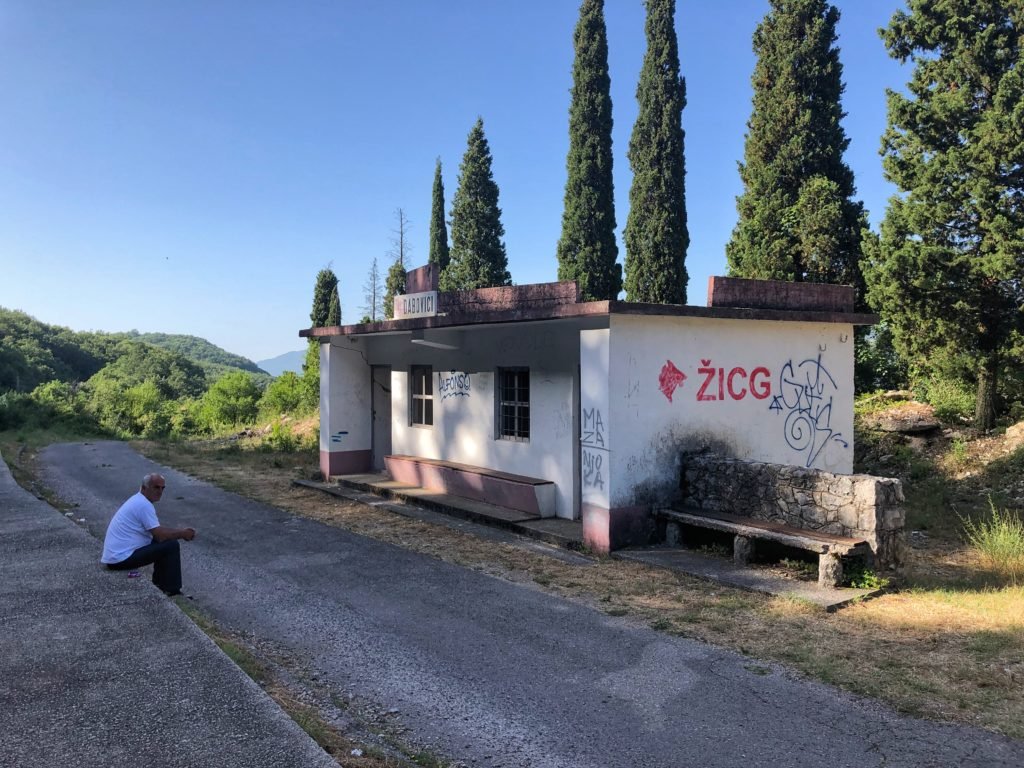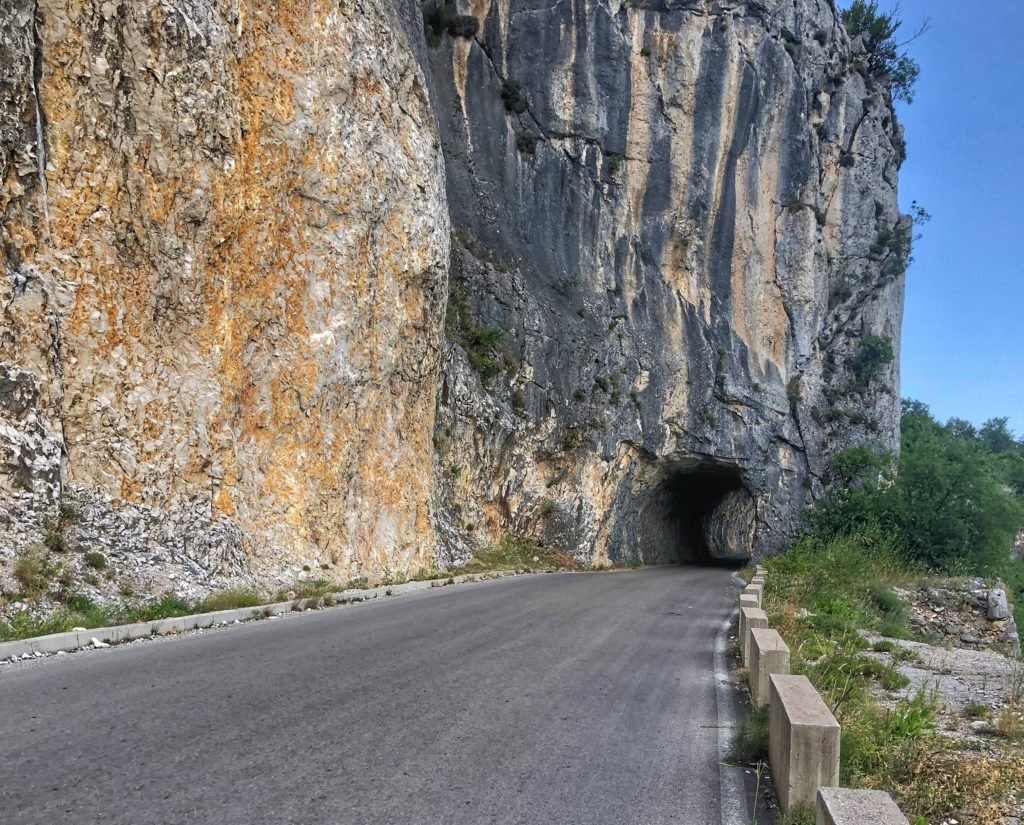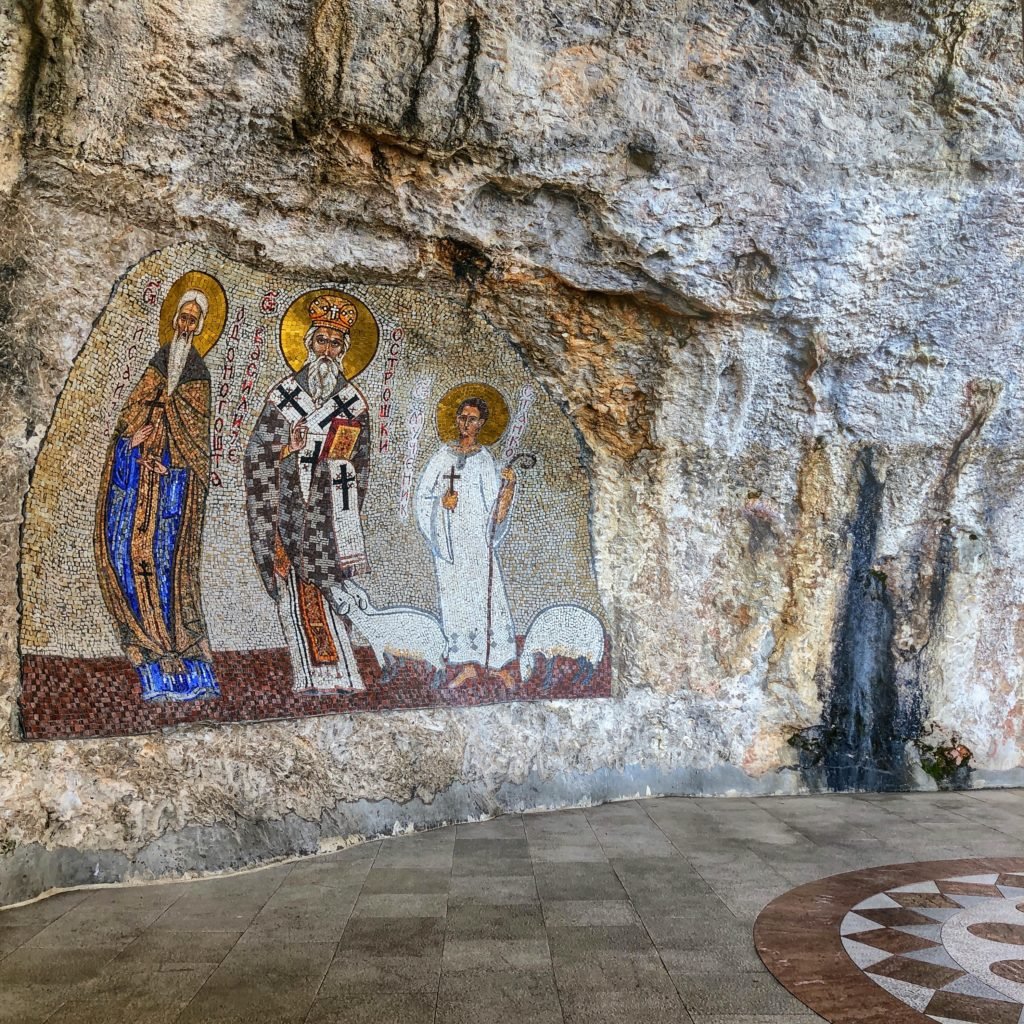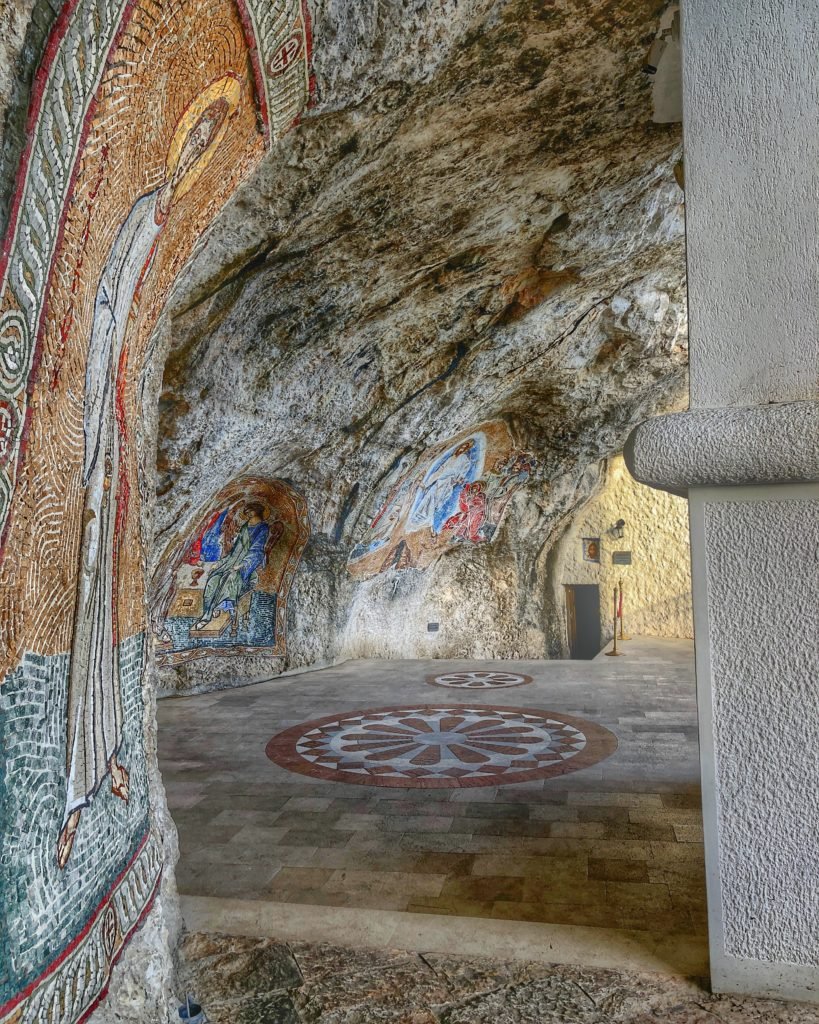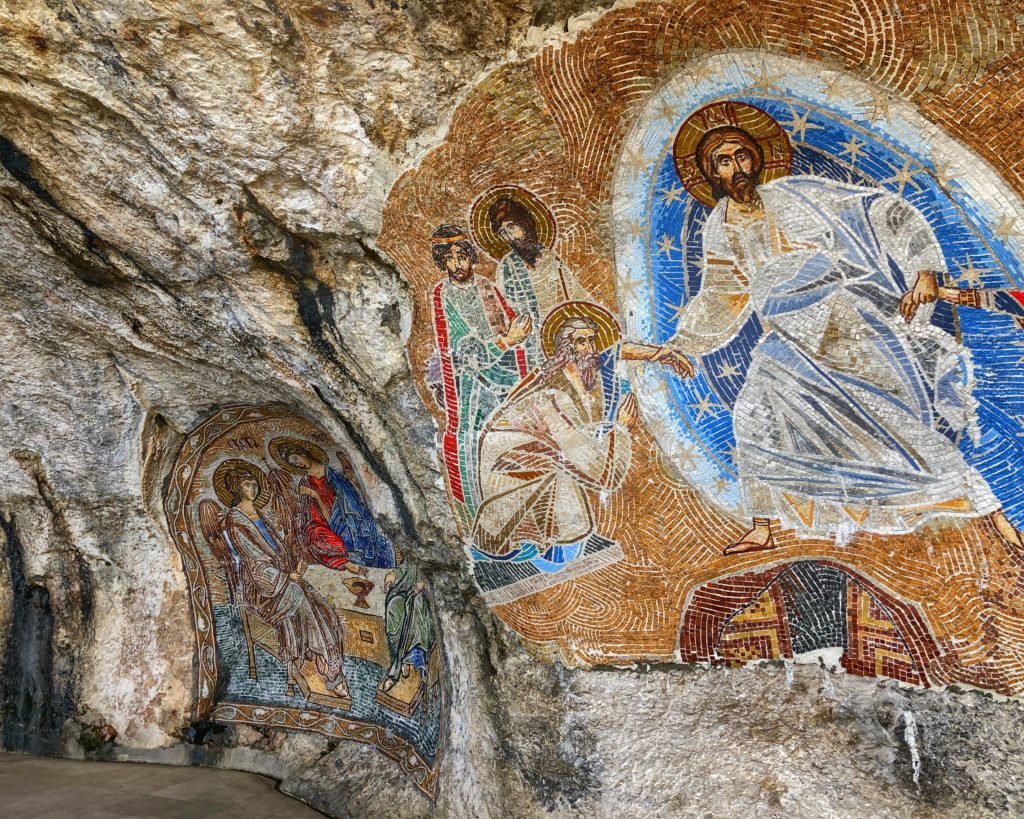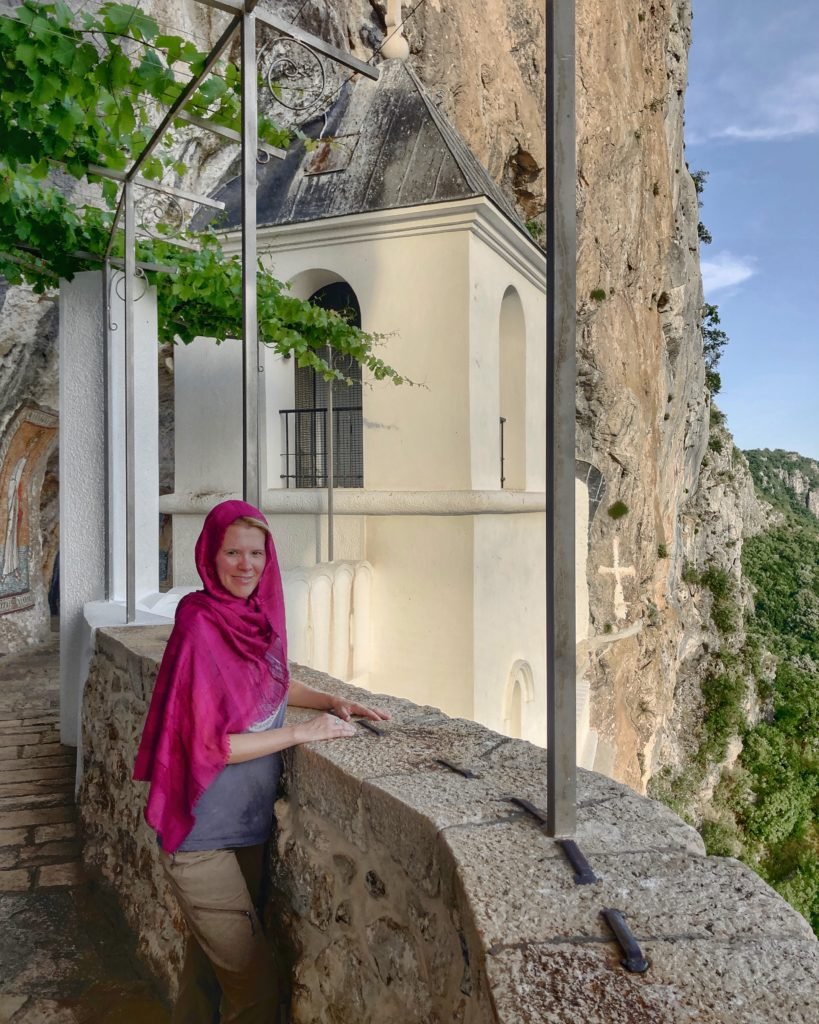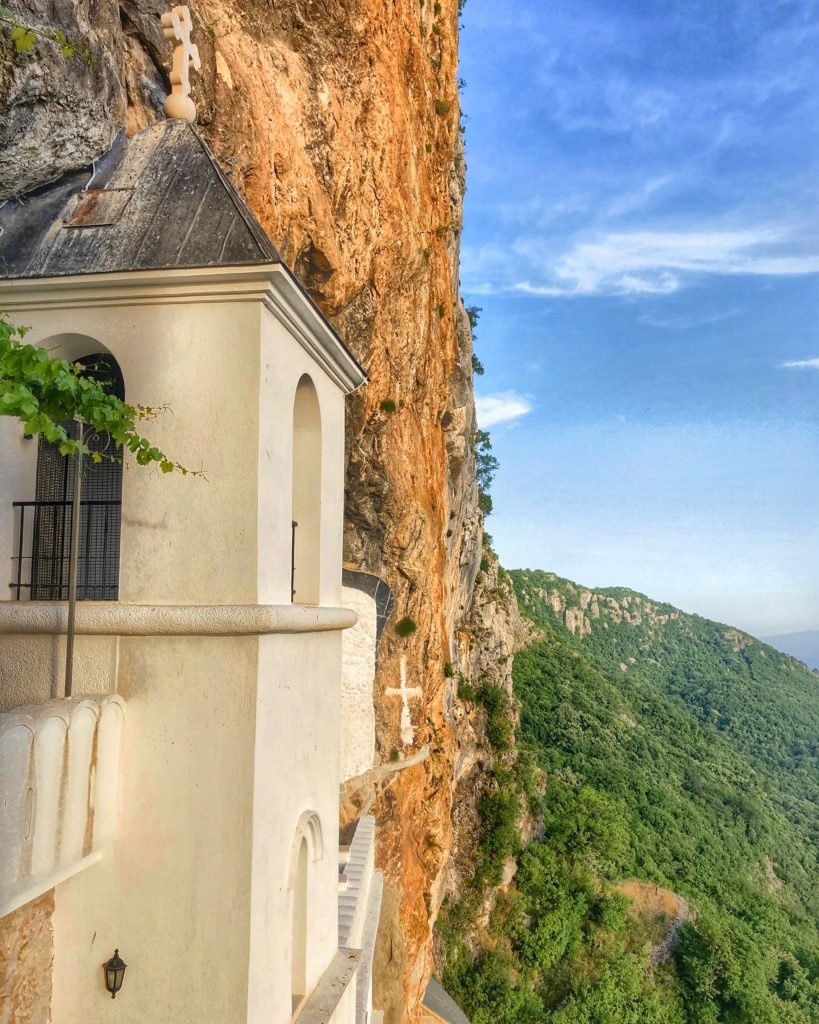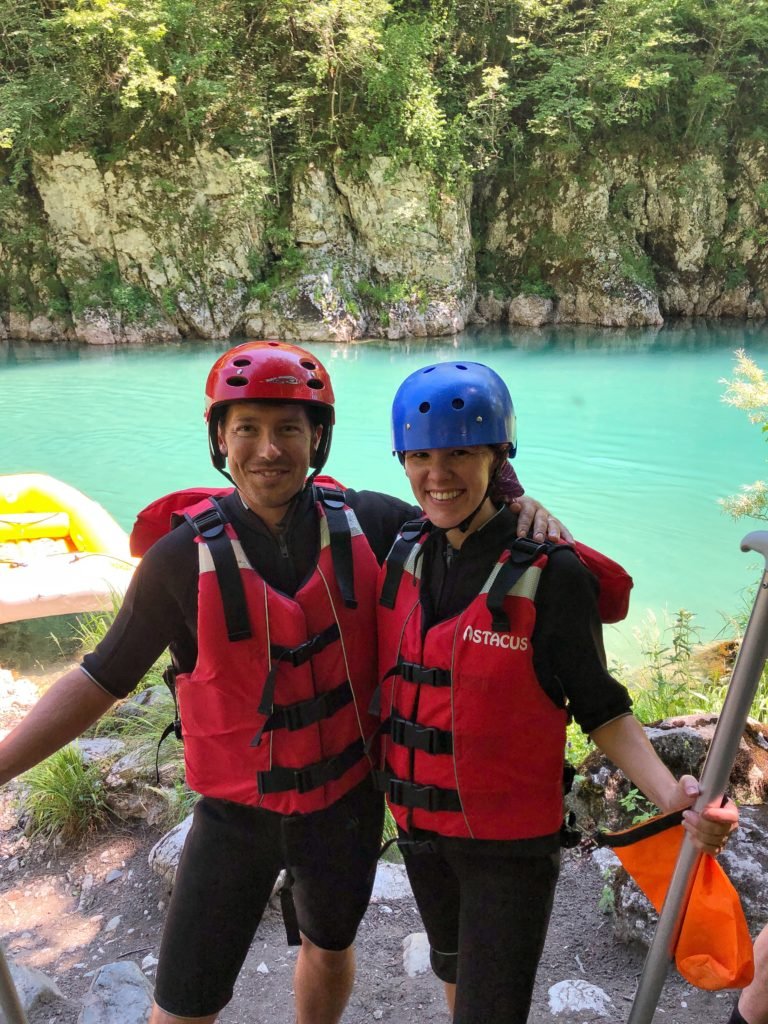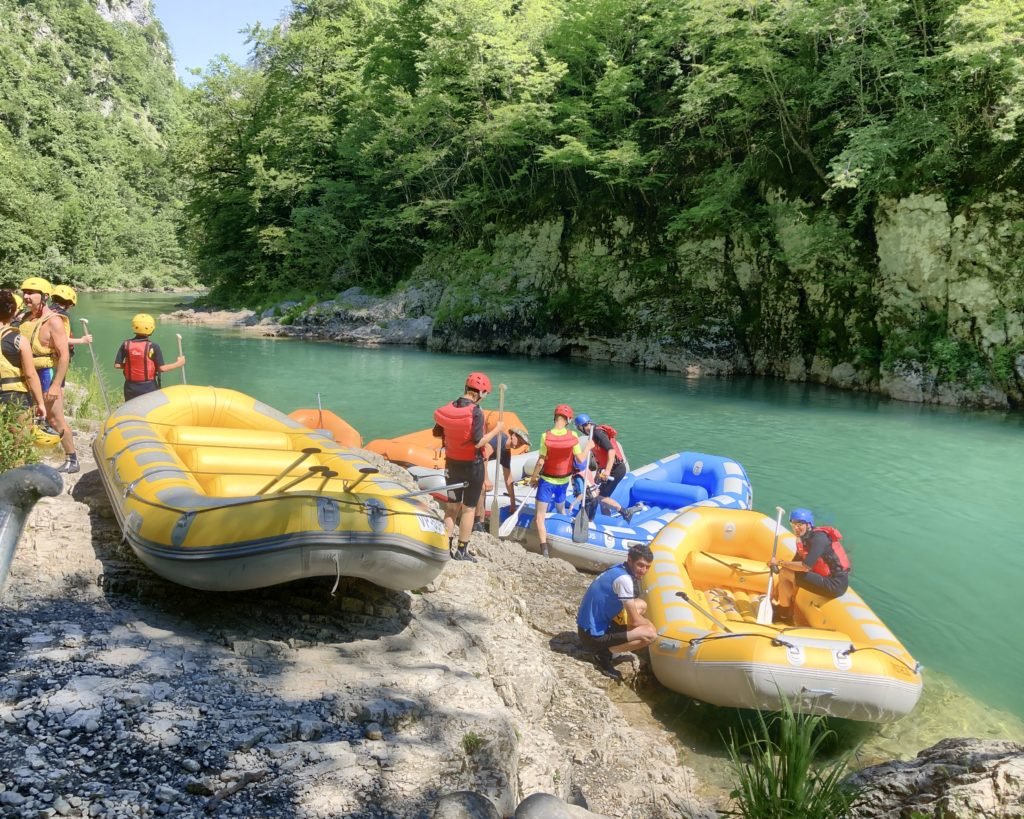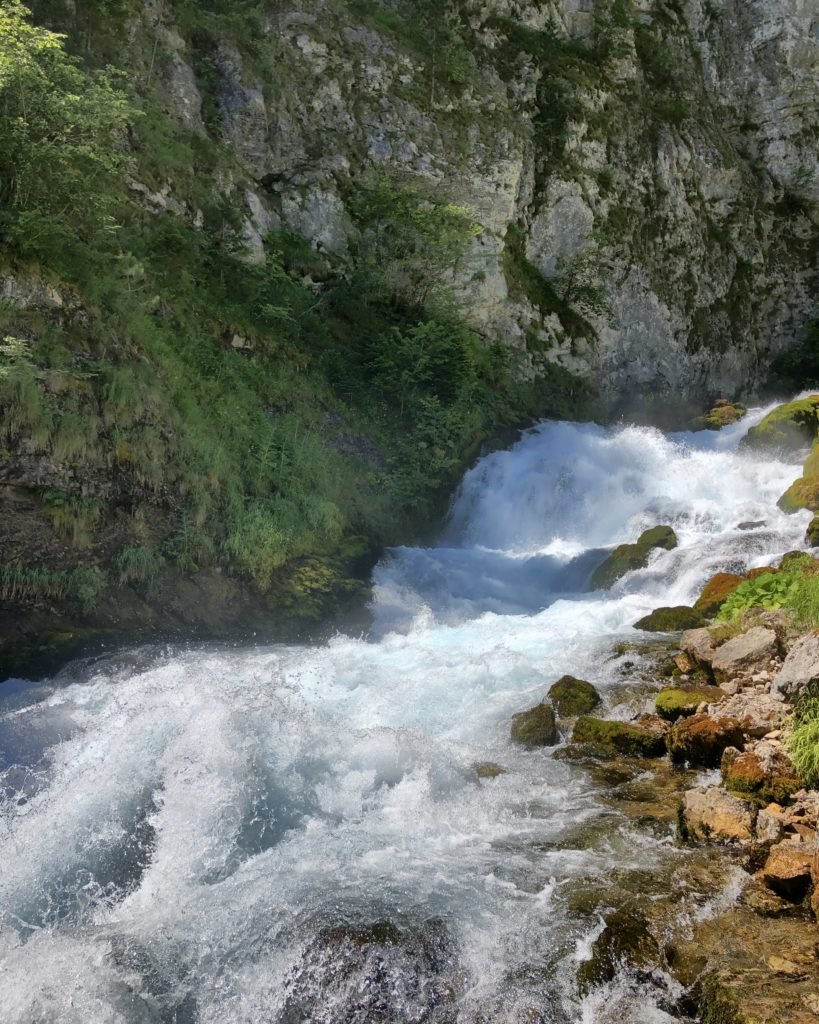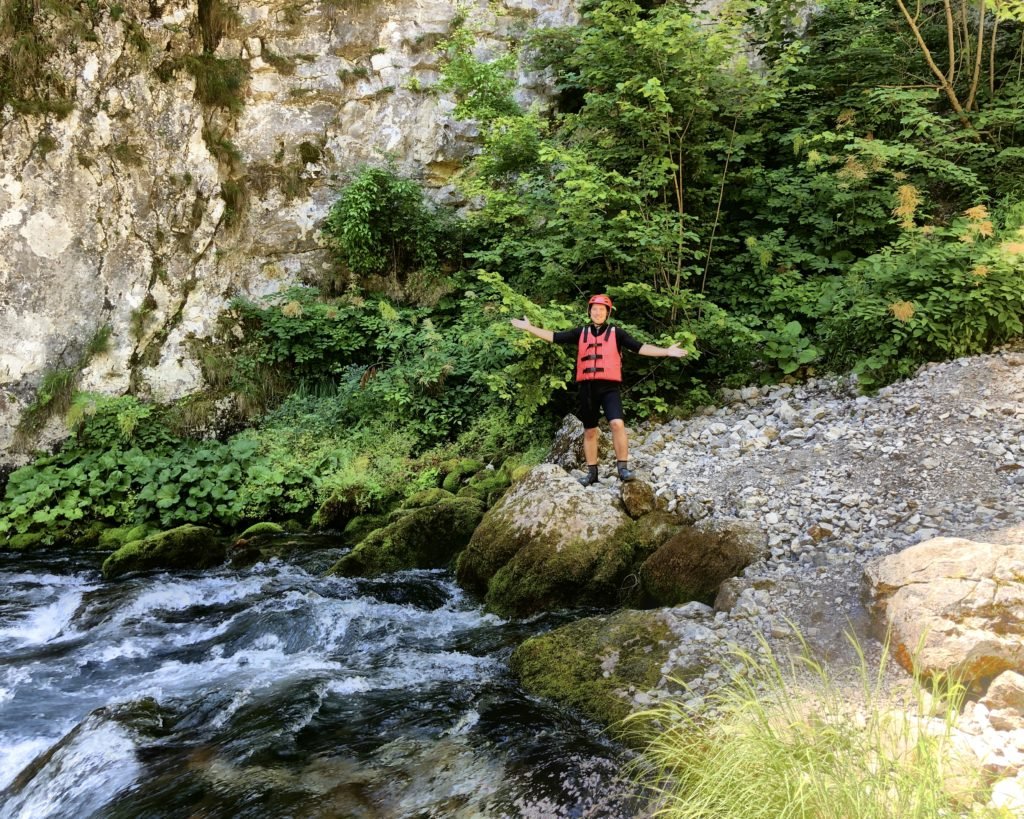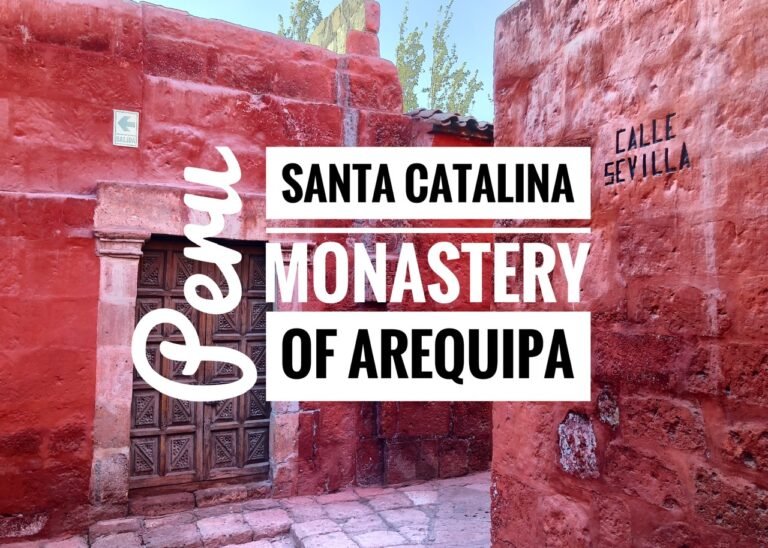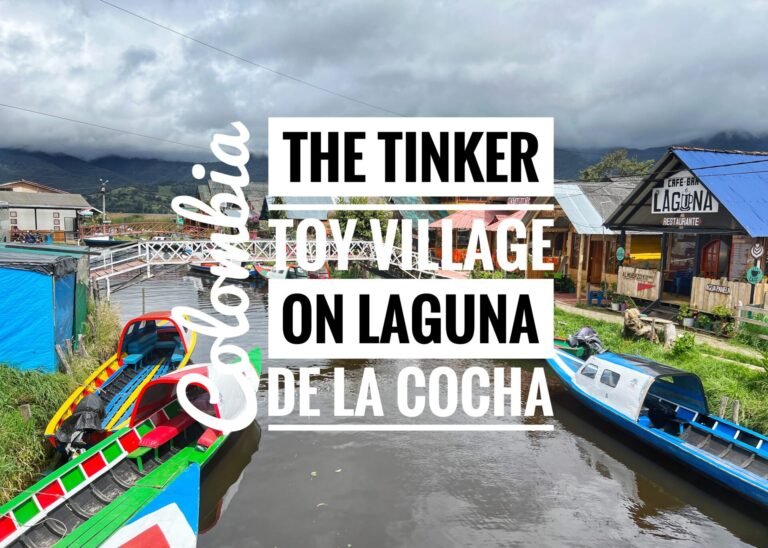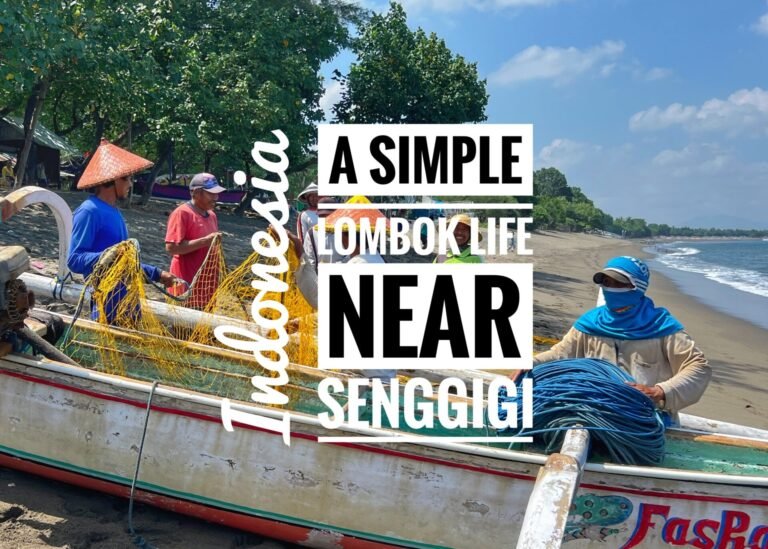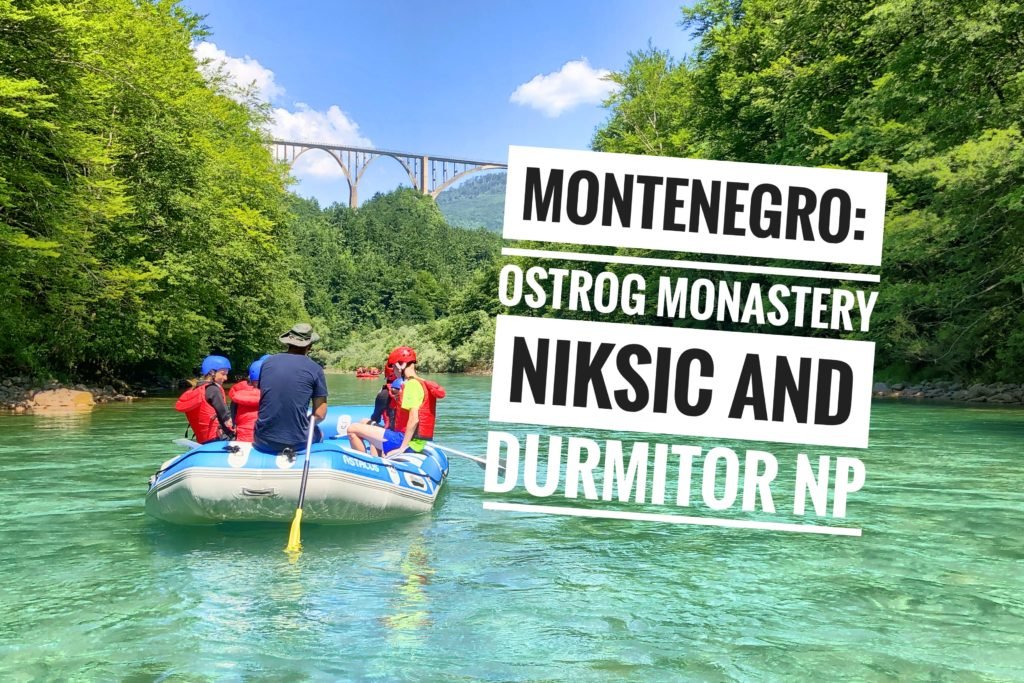
After the summertime chaos of Montenegro’s coast we were more than ready for some serenity so we set out for the country’s namesake…the mountains, black mountains, to be precise. They’re mostly green though thanks to the verdant sheet of trees carpeting the landscape.
We entered the mountains via a bus from Bosnia & Herzegovina, but of course we took the more challenging way. It’s incredibly easy to take a bus from Kotor, as Montenegro is very well connected, and quite small (think Connecticut.) It’s so small it was invited to be part of the Games of the Small States of Europe combined with other nations like Luxembourg & Andorra, presumably to remind the EU big wigs of their existence.
Alas, we digress…
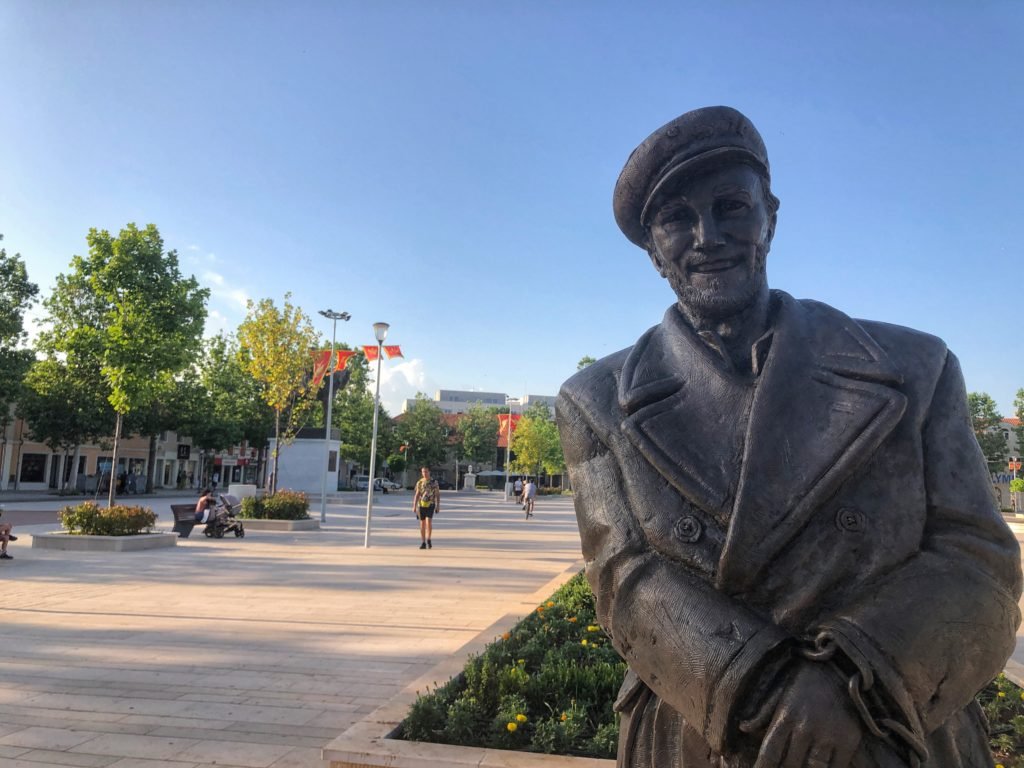
A four-hour windy, nausea-inducing ride from Sarajevo after an uneventful border crossing led us to the border town of Niksic. The main thing Niksic is known for is Niksicko, Montenegro’s macro beer maker. We gravitated to a less commercialized beery place…a German beer bar called Oktoberfest (because aren’t all German bars in foreign countries called this?) It was a nice, for a brief stopover. It included a very open and community living room feel which we enjoyed on a pleasant summer evening. Probably because its sculpture in the main square was such a jolly fellow and not just the commonplace dead dude on a horse. The best part is? He’s wearing chains and he’s still smiling.
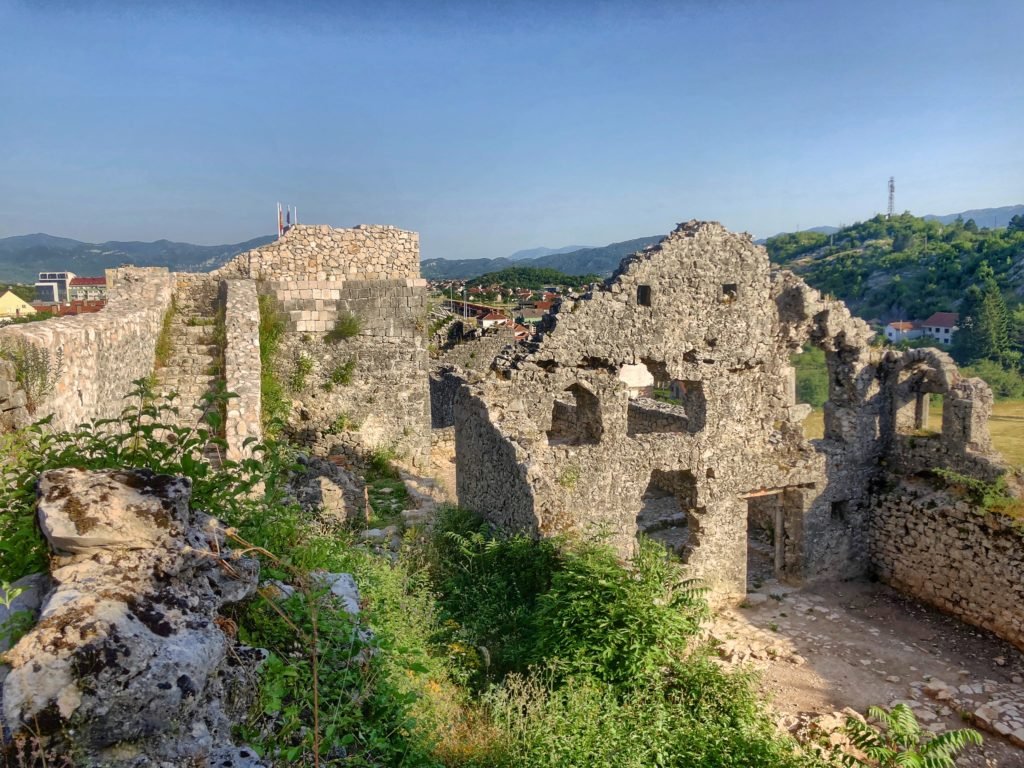
Niksic also has a fortress, complete with ramparts that jut up from the city streets to a small limestone rock outcropping. It was free, climbable and empty. Our favorite combo.
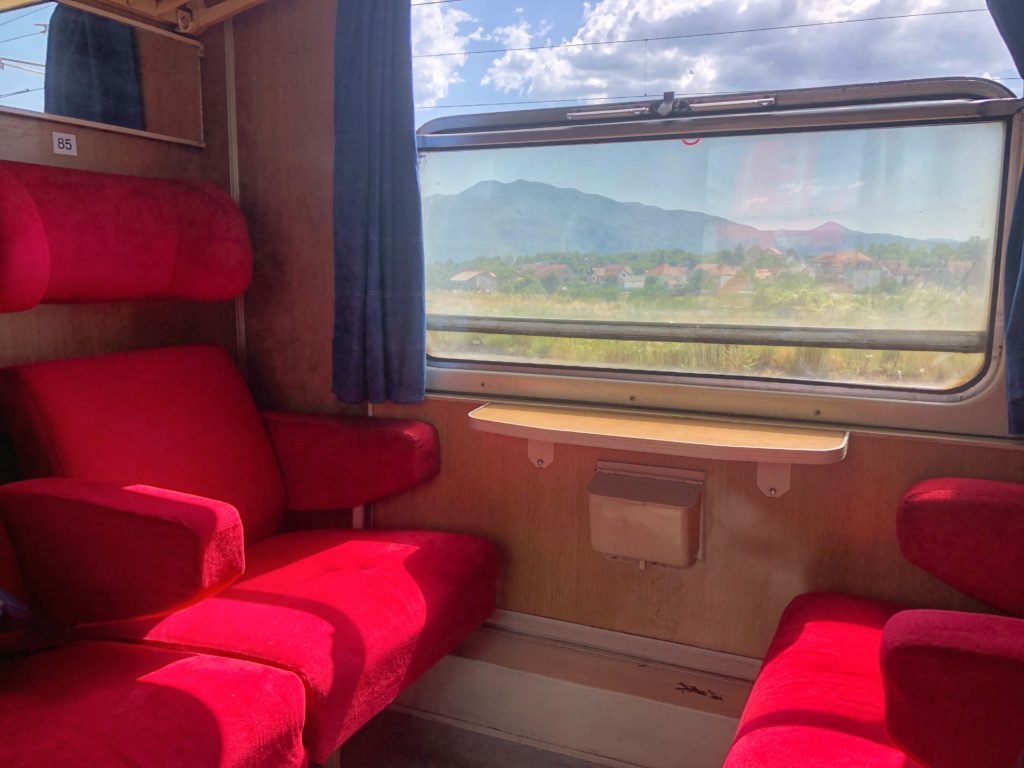
Our main purpose in staying in Niksic was to use our Airbnb as a ‘left luggage’ while we took an overnight trip down to Ostrog Monastery, which worked out perfectly. We took the train (2€) south (20 minutes) two stops to Dobovici. We really wished we could take trains more often and for longer distances in the Balkans since they are simply divine compared to sticky, cramped, uncomfortable bus travel. Not to mention, exceedingly cheaper. Montenegro does have main travel routes: one from Bar at the coast, which goes all the way to Belgrade, Serbia, and the other from Podgorica (the capital) to Niksic, which was the route we found ourselves on.
Once we arrived to Dabovici, we turned north from the station and with day packs, we walked the hour-long hike up the road to Ostrog. After getting up the hill, most of the walk was actually somewhat flat and on a fairly pleasant roadway.
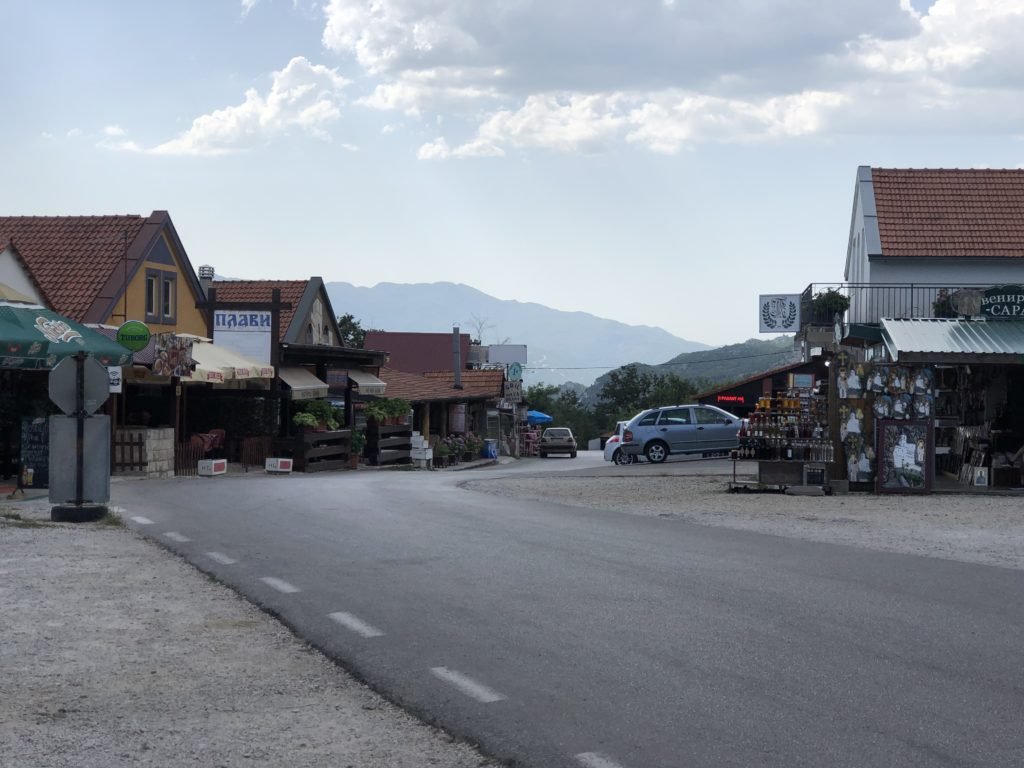
Eventually, we got to some restaurants and a collection of souvenir stands, selling homemade wines, religious icons, tempting honey and Rajka (plum brandy) in many, many different varieties. It was like being in American supermarket cookie aisle, but for liquor. We also started seeing the tip of the Ostrog Monastery appearing up in the cliff which made all the hoofing up the mountainside worthwhile.

Continuing on, we got to a sign that said “overnight guests” which Mandy thought was the “lower monastery” rooms she had read about. Going inside, we used our limited Montenegrin and fantastic mime skills to indicate we wanted two sleeps for the night. After plopping down 5€ each, Greg was guided to separate quarters by a hulking man (so many of the people in the former Yugoslavia seem to be giants), and Mandy by a woman, (neither overly friendly) for our first overnight forced segregation in nearly a year. The bunk rooms were simple dorm-style, reasonably comfortable, but definitely not air conditioned. Greg’s room luckily for him, remained empty, while Mandy gained an Orthodox Slovenian/Bosnian roommate who was visiting the monastery on pilgrimage, as is quite common.
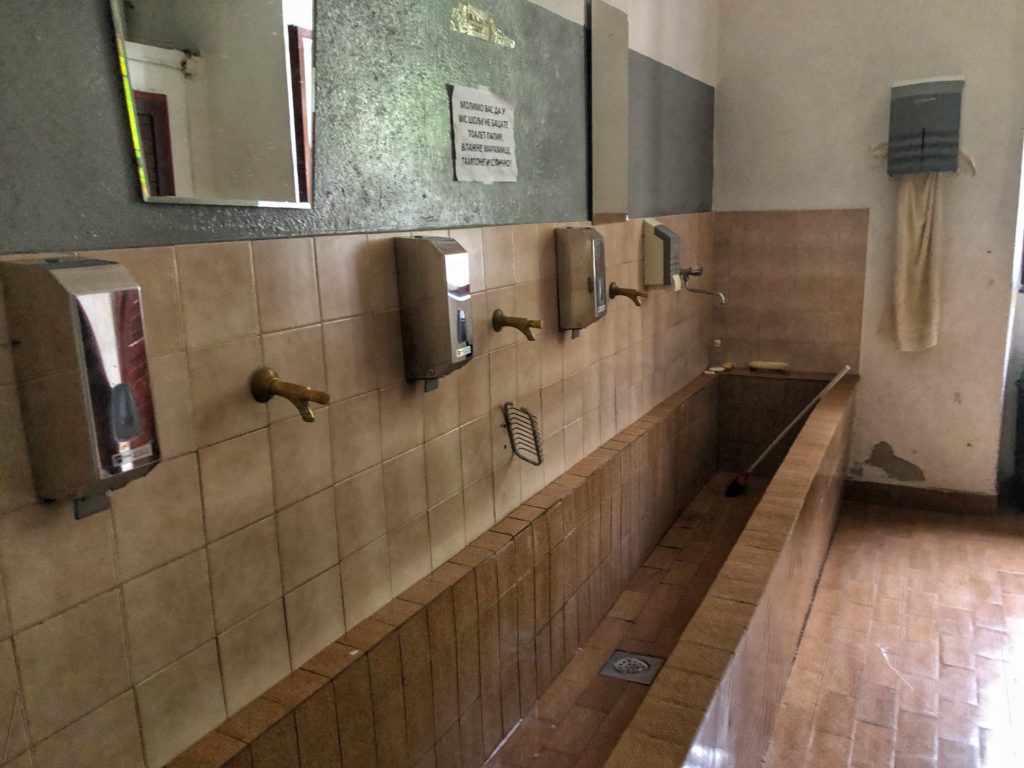
The “showers” at the monastery guest rooms. Clearly more of a sit-and-splash situation where modesty must be forgotten.
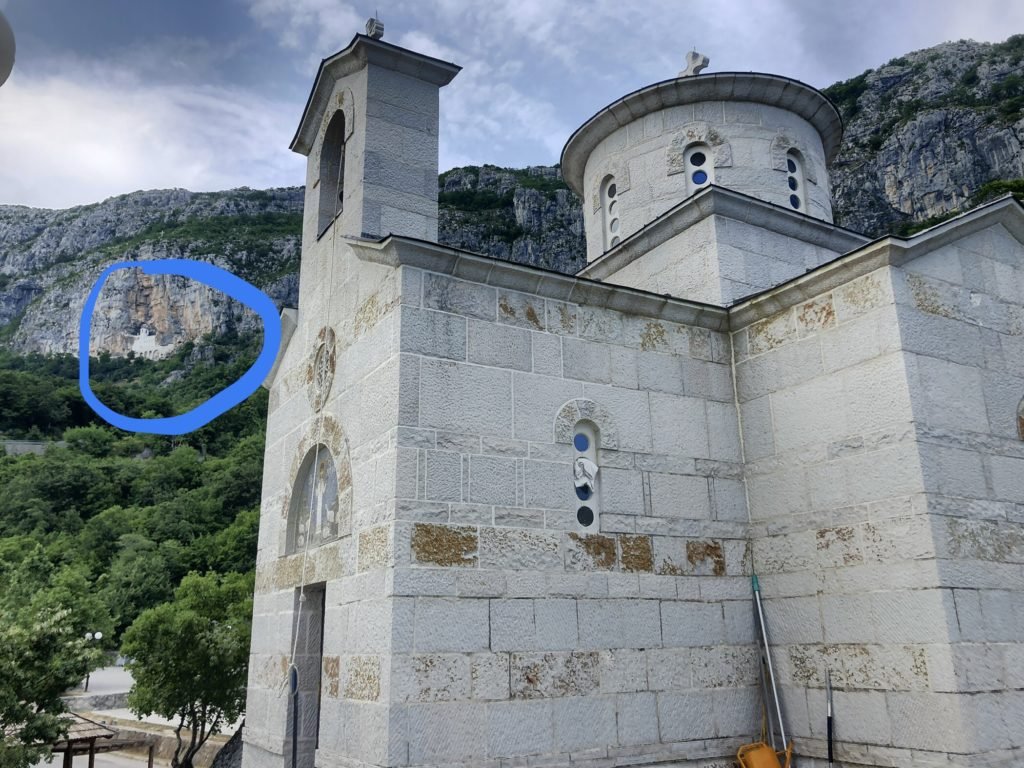
One of the lower churches, which is right next to the boarding rooms where we stayed. From it, we got our first unobstructed glimpse of the gleaming white upper monastery high on the cliff behind.
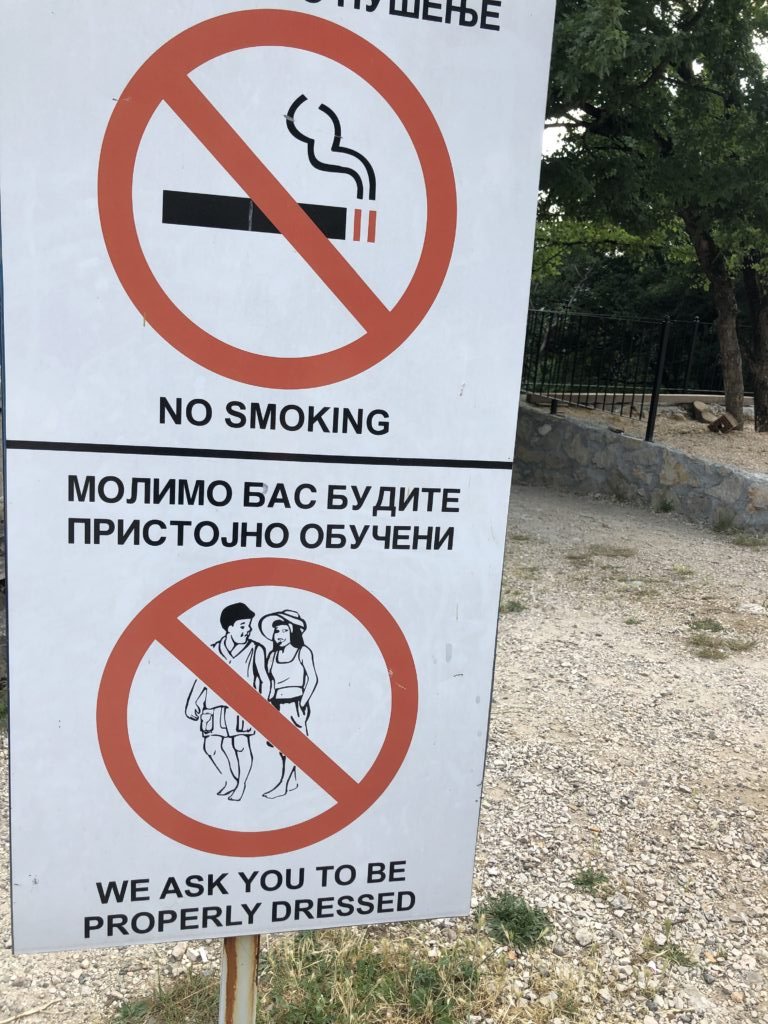
Although modesty is forgotten in the segregated wash rooms, outside of them is a very different story on the monastery grounds. Men should wear trousers, and women should wear long pants/skirt, a modest shirt, and a head covering is also recommended. Also, couples, should avoid walk around canoodling.
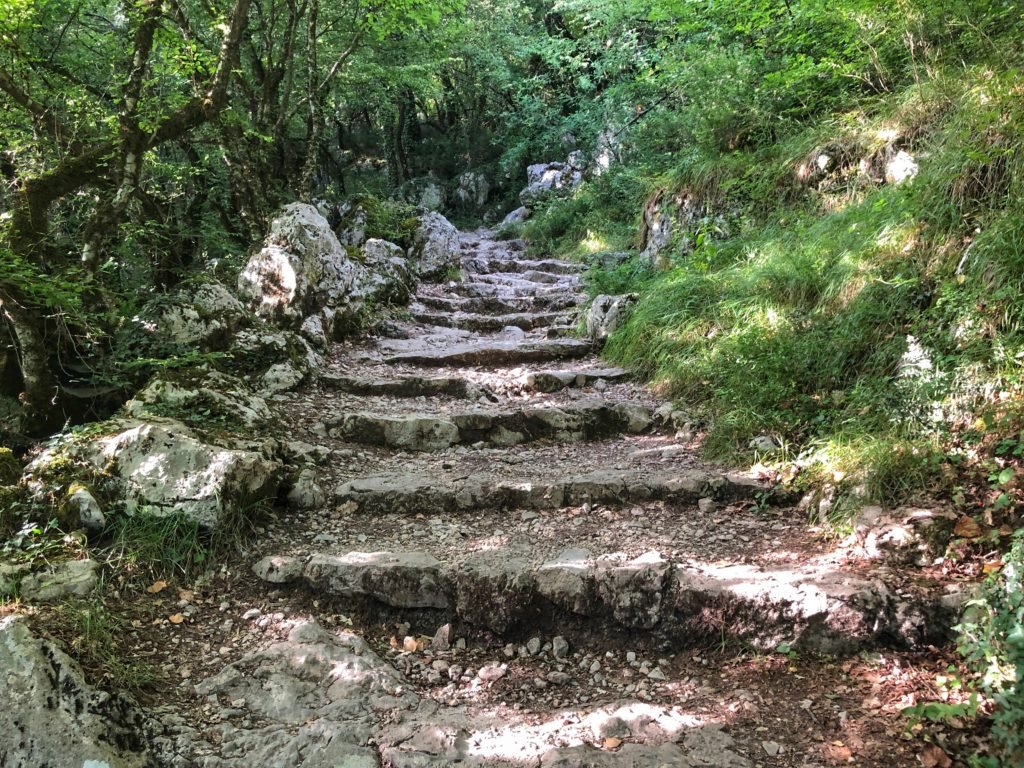
That evening, after the enticing preview, we continued to hike another two miles up to the upper monastery. You can also take a taxi if you feel like tossing out 10€ to avoid the climb on the well-loved and ancient stairs.
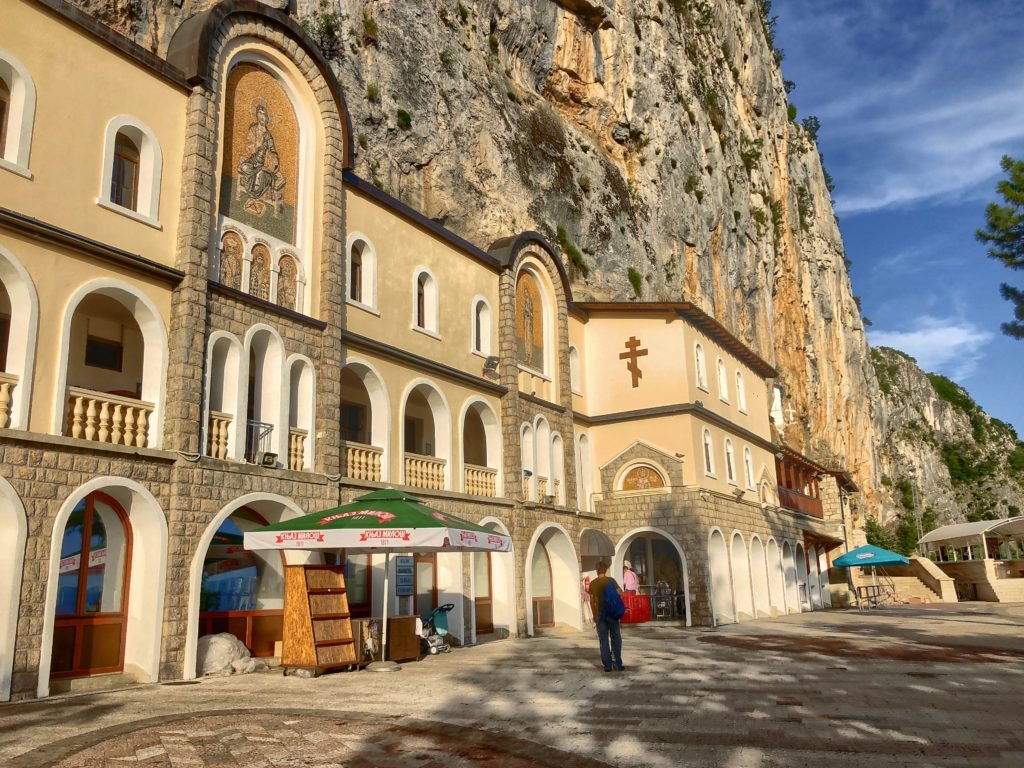
When you arrive to the top, you enter a gate and see the other lower monastery, which centers around the Church of the Holy Trinity that was built in 1824. It also makes up most of the monk residences. Evidently you can sleep here too, which is where Mandy had actually intended to sleep, but got confused by the lack of info and inability to speak English. Oops.
Speaking of Mandy getting confused, we also joined a queue within the monastery itself, not knowing what it was for. (Because obviously when there’s a line, it must lead to something cool.) At the end of the line was what looked like a small cave (we later learned this is called the “Church of the Presentation”) When you get to the front, you duck into the cave and it’s a very teeny room which fits about 3-4 people. Everyone was lined up to be blessed by the priest, kiss the tomb of the Saint Basil of Ostrog, and make a donation. We had no money on us, no experience with this type of religious tribute and no escape route other than to move forward with everyone and act like we knew what we were doing. So…awkward.

If you are here in the summer, will also notice some people beginning to congregate on sleeping pads and blankets outside the monastery. These blankets and pads are provided free of charge to any pilgrims wanting to sleep overnight beneath the glory of this gorgeous monastery. Sleeping on the hard stone surface overnight sounded intriguing to only one of us, Mandy, so after a quick dispute on the merits of having a mattress underneath oneself, the mattress p.o.v. won out.
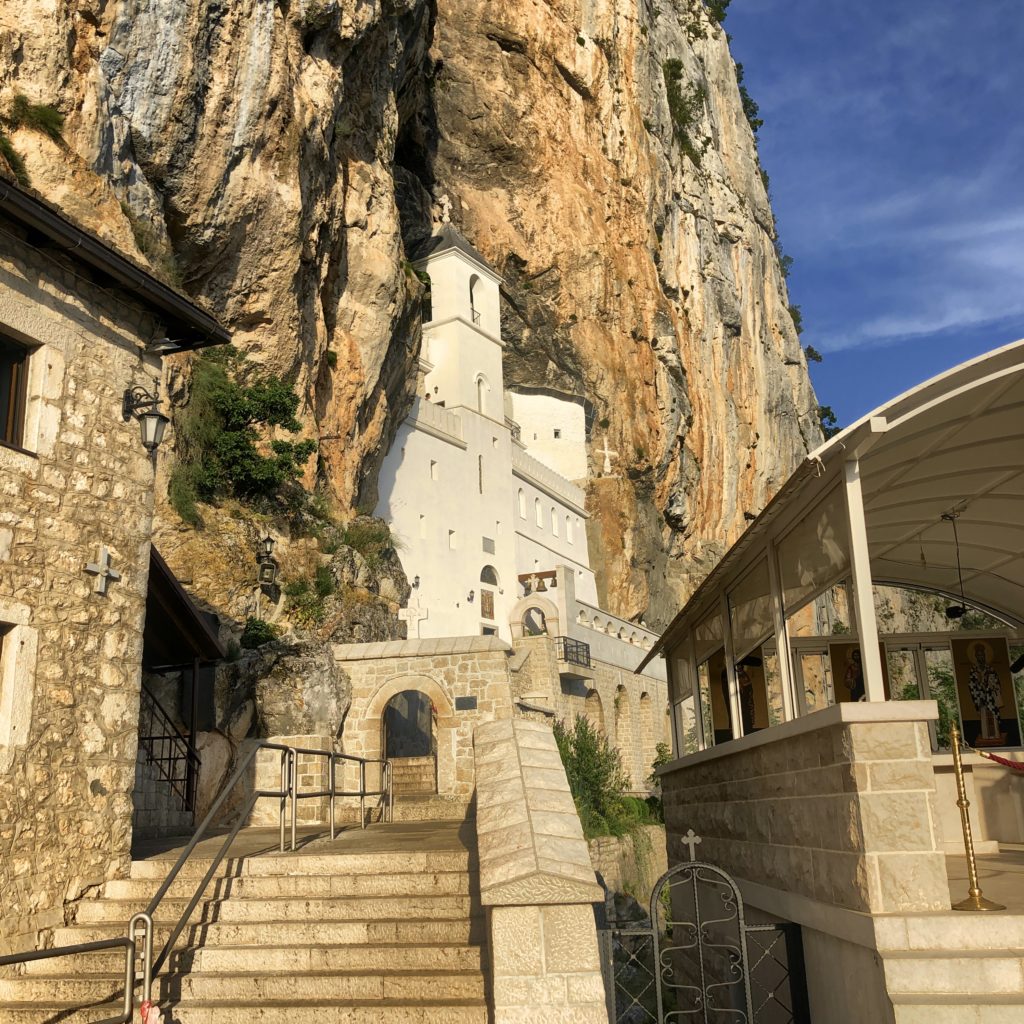
The Serbian Orthodox Ostrog Monastery was built in 1665 and is a true marvel, 900 meters up in a cliff above the Zeka Valley. Over a 100,000 people make the pilgrimage to gaze at it every year, many on day trips from Kotor. Many people believe that by coming here and praying they will be cured of illnesses. It’s beautifully affecting and absolutely free…as it should be, although donations are gladly accepted.
We can’t think of a more fitting place for such intricately crafted mosaics than Ostrog.
Mandy takes in the beauty of the present moment and admired the craftsmanship.
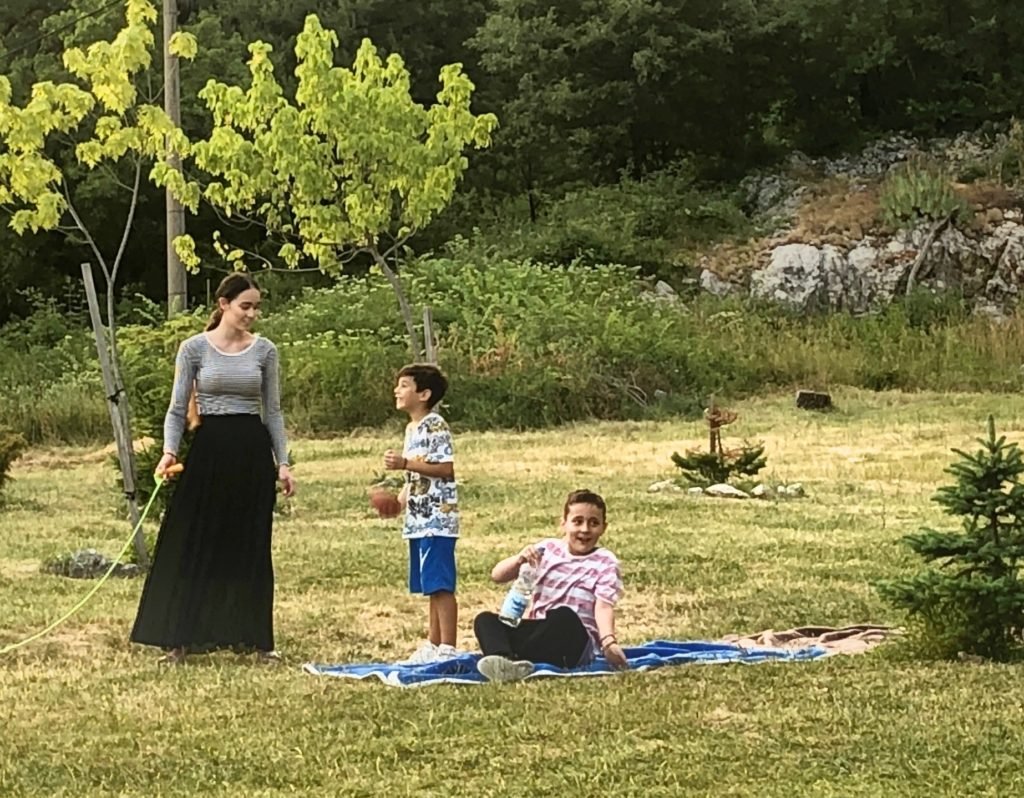
After, we returned to the boarding house and sat on the grass for a picnic (aka beans in a box and some fruit) which we’d trucked up the mountain with us. We didn’t know if food would be available, but turns out there were a couple restaurants as aforementioned. Also, FYI, there was a small kitchen available in the boarding house, which is on the women’s wing only…(naturally.) While enjoying our picnic, we observed the kids who seemingly lived in the boarding house, going about their normal kid lives playing soccer and bickering with each other.
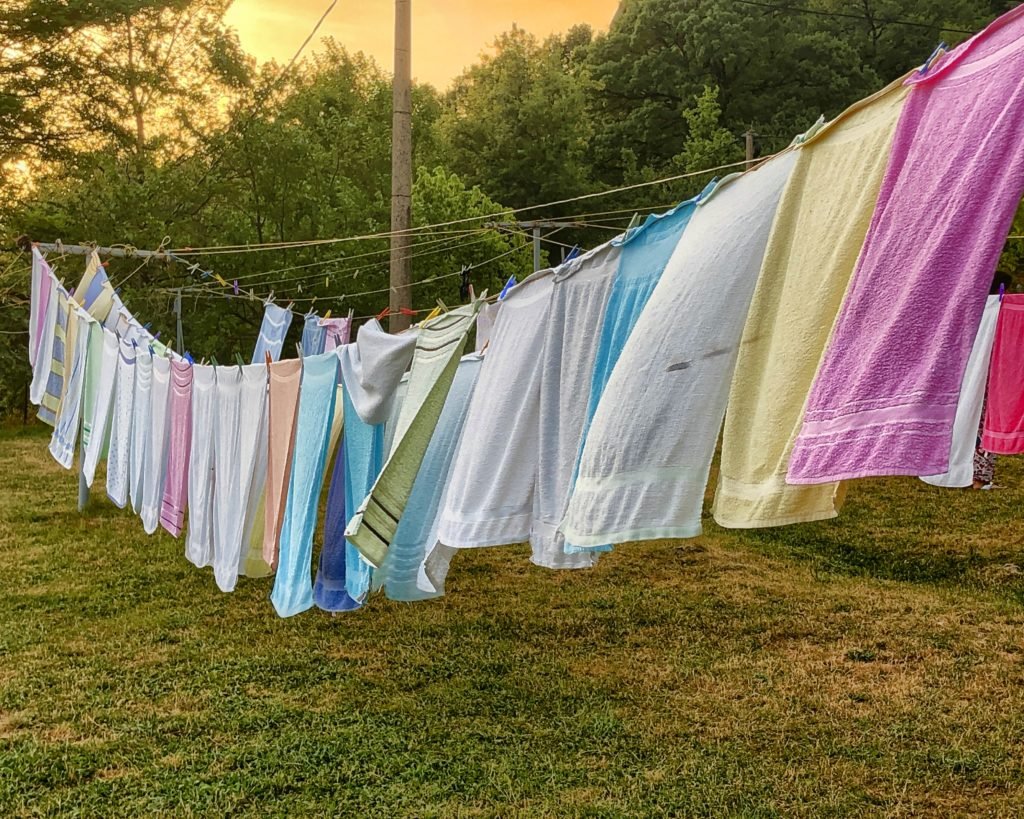
We couldn’t figure out how they possibly went through all this laundry. There simply wasn’t that many people there!!
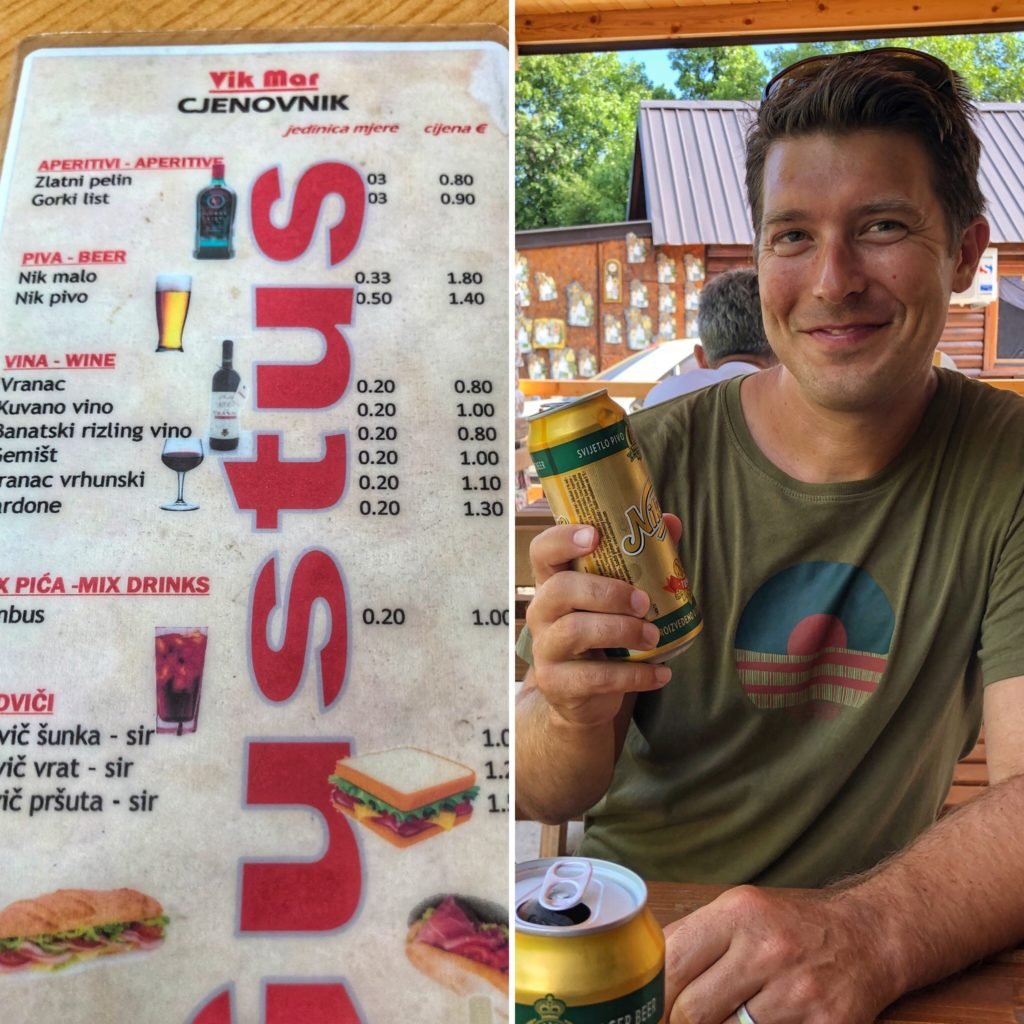
Since we were in Orthodox land, it was easy to come by our favorite vice. In Montenegro, this means a Niskicsko. Notice the “pivo” beer menu. “Malo” means small… and taking a closer look you will see a small beer is .40€ more expensive that the half liter size. Huh!? Guess we gotta for the bigger one!
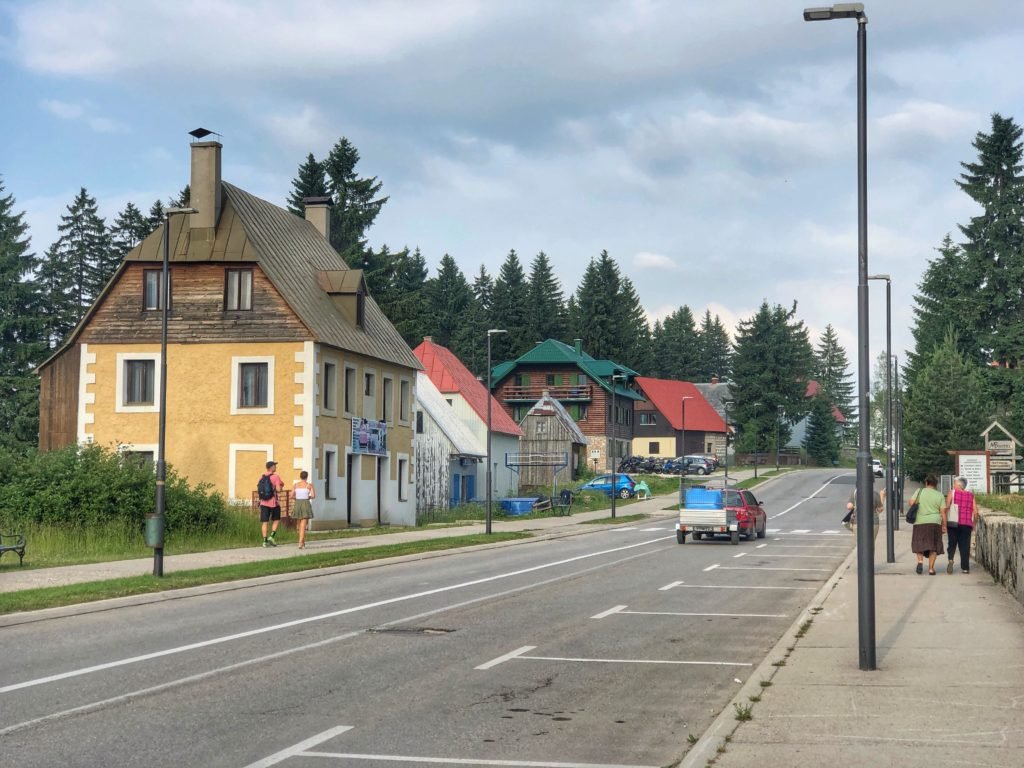
After an early tranquil morning listening to prayers, chants and church bells from the monastery, complete with some meditation on the lawn for one of us, it was time to hike back down the hill and grab the train back to Niksic to pick up the kids. (Our bags of course.) From there, we took a two-hour bus ride to the little mountain nook of Žabljak. This town is typically used as the base for exploring Durmitor National Park, Montenegro’s most popular outdoor adventure playground.
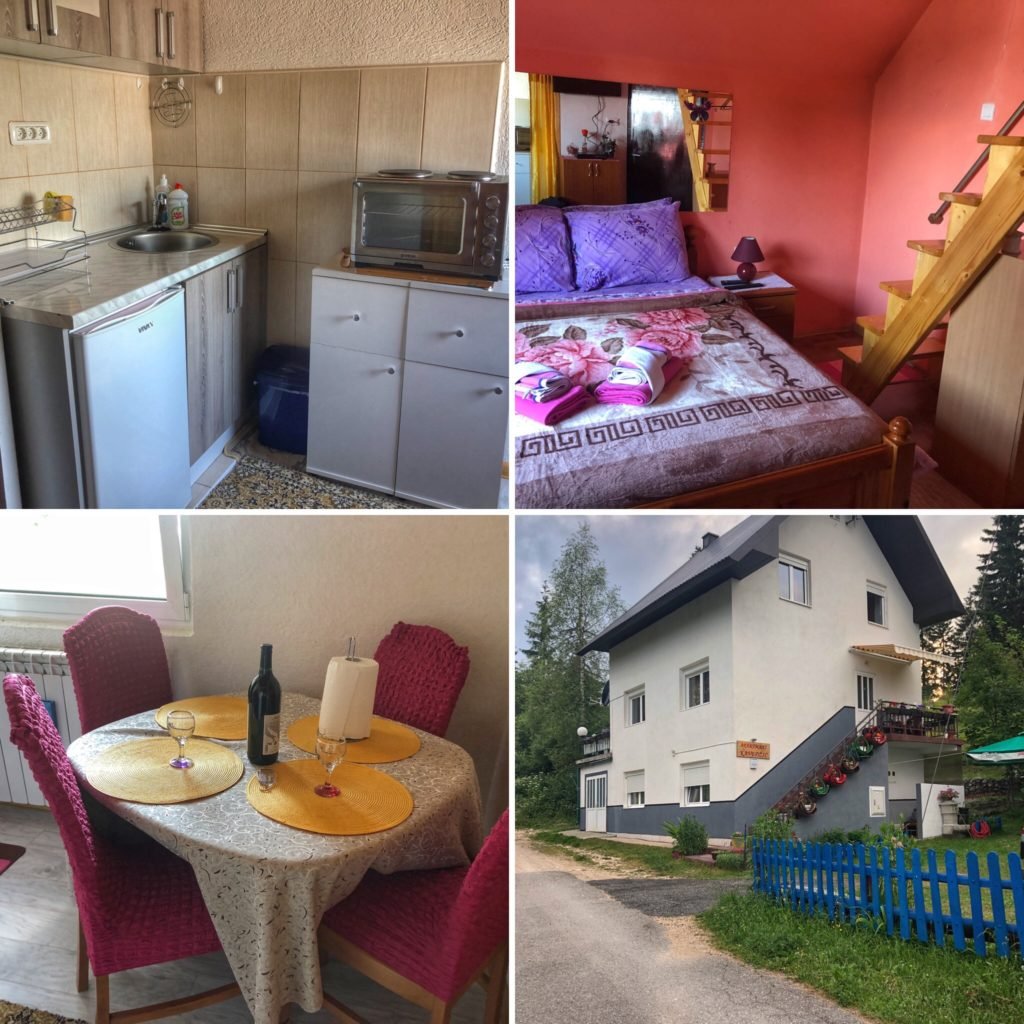
We checked into our place in Zabljak , Guesthouse Kavedžić, and although the English barrier was next to impossible to overcome, we were overloaded with genuine hospitality, which was the first experience like this in Montenegro we received. They started by upgrading our room to a full two-story apartment for no extra cost ($27.50/night) and placing a bottle of Vranac wine (Montenegro’s speciality grape varietal) on the table for us.

The next day, they also delivered a huge breakfast to our room for no extra cost, which included breakfast standards like coffee, milk and Rajka (Raki). Wait…what? Rajka? Yes, because everyone needs a shot of liquor with his or her eggs? They also brought us afternoon snacks and tea, (including a more appropriately timed shot of Rajka.) The thing is, Rajka goes down like gasoline. Not exactly a smooth endeavor. Regardless, we appreciated them very much during our four nights in Žabljak.
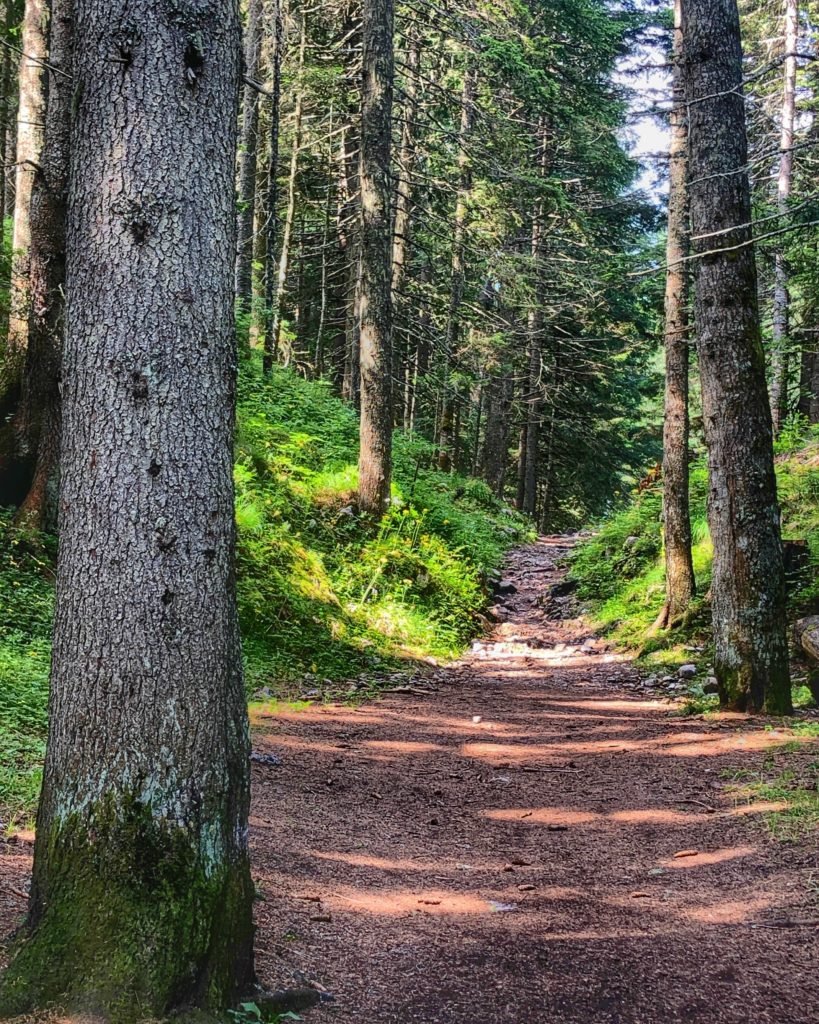
Our hikes in Durmitor were pretty tame. Although the weather was much cooler high in the mountains, we encountered a bit of rain, and even a hailstorm. Thus, we were stuck inside in the outdoor playground. Doh. We did get in a small hike on July 4 and were elated to find colors of green and spruce that parallel our former life in the Pacific NW.

We walked an hour to find some adventure at Zminje Jezero (Snake Lake.) No snakes. Just the most transfixing emerald body of water we’ve ever seen. It was really stunning.
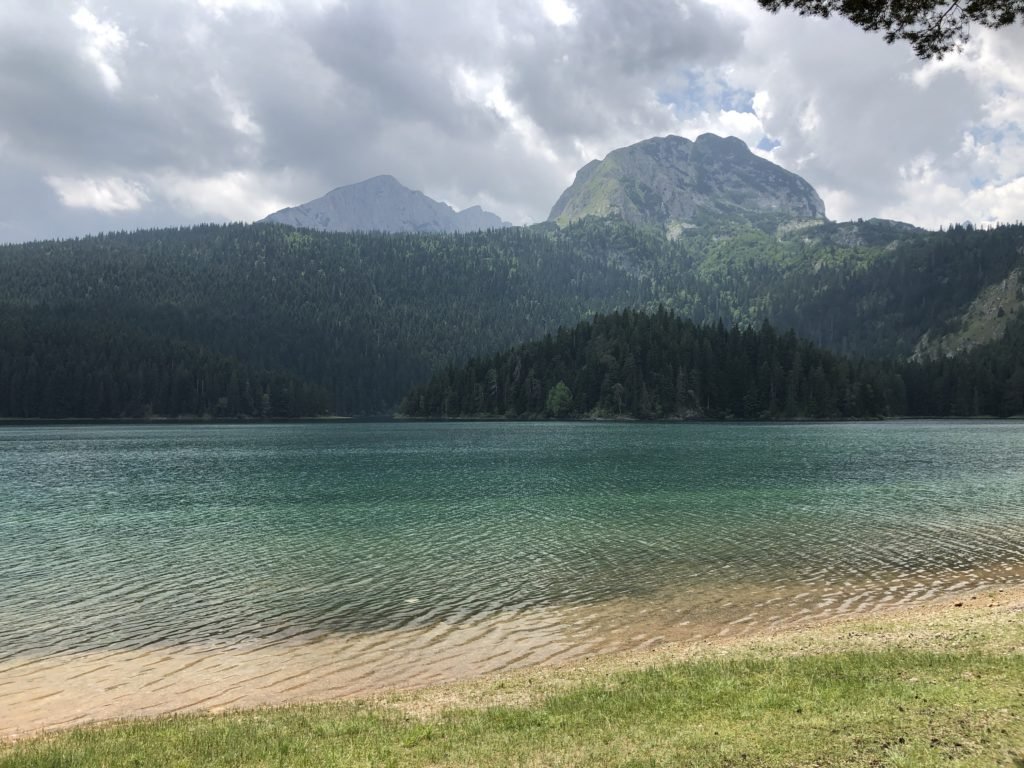
Crno Jezero (Black Lake) was also very lovely, but where the name developed is a bit questionable. This is the main lake that any visitor will see when entering Durmitor from Žabljak.

Speaking of entering the park from Žabljak, if you swing a left at these buildings just before the entrance and walk a little further on the wooded path, you can avoid paying the 3€ per person per day entrance fee. (Yes, we understand the irony that one of us is a former park ranger who is trying to duck park fees.) But honestly, they don’t make it very difficult… this was just one of many free ways into the park and we are also opportunists on a budget. These buildings are actually kinda sad. It looks like a perfect mountain-style yogi bear camp, but they’ve gone to the wayside along with yogi bear.

Two days later, the ball in the sky came out in all its glory and we couldn’t have asked for a better day in the sun to rip some whitewater currents in the famous Tara River Canyon. (45 € each with a fish lunch.) Our day started with a shot of Rajka (because why wouldn’t it?) and we made quick friends with our boating companions from the UK and Austria. Greg tests his Rajka with Steven and Jo. It still tastes like gasoline.
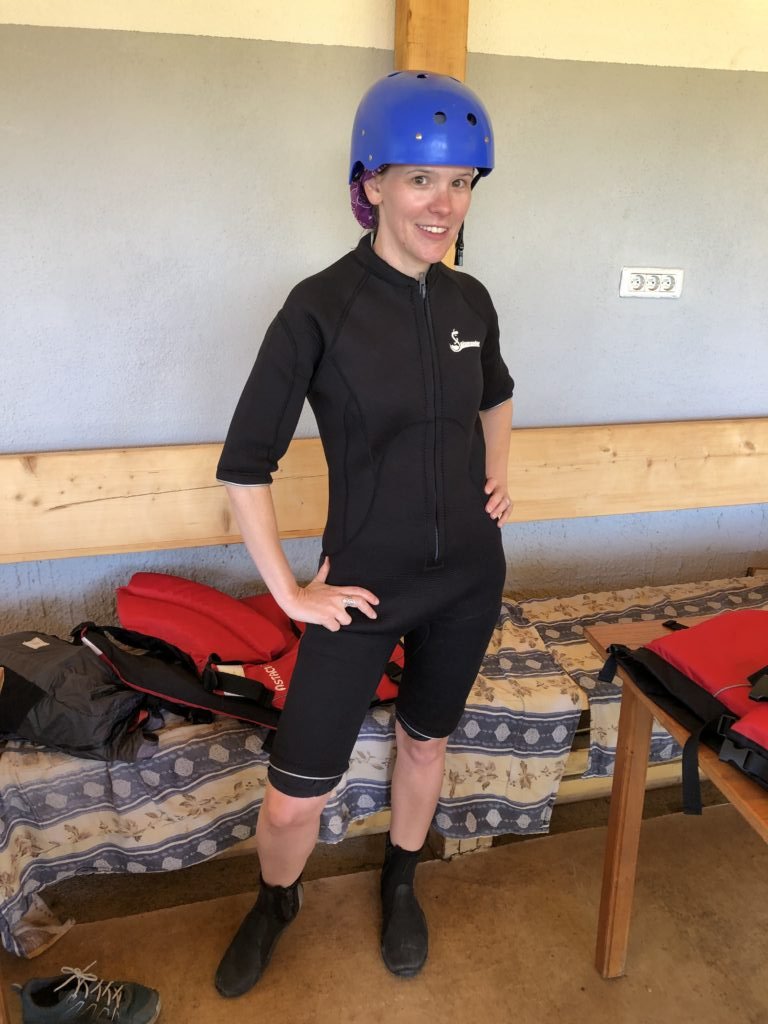
After zero safety demos or liability waivers on which to sign our lives away, we got suited up to avoid the intensity of the 13 degree water (55 Fahrenheit.) And, by suited up, I mean very slimming sexy wet suits and suctioning aqua boots. Mandy models the deer in headlights look. Clearly she belongs on E’s “What Not to Wear” List.
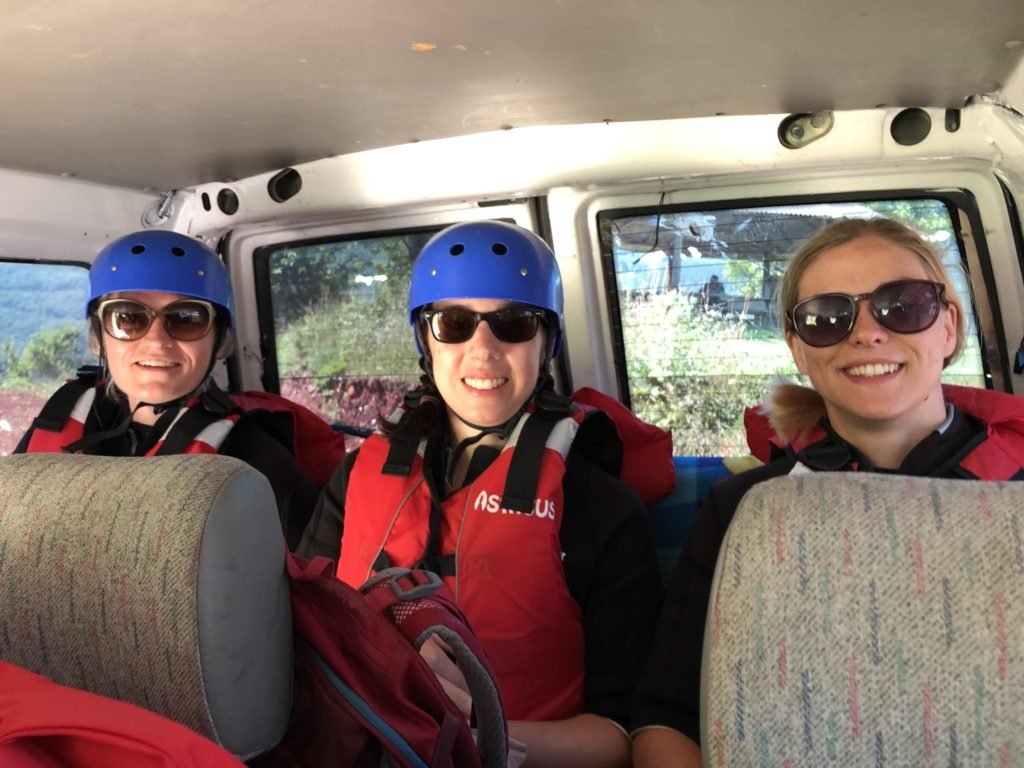
As the van drove us about 15 minutes to the put-in spot for our rafts, we got to know Andrea, Birgit, and Karin as well. They wanted the world to know they were Austrians…not Germans! As usual, we just wanted the world to know…we didn’t vote for him.
Arriving to the most beautiful water we’ve ever rafted on!
Nearly as soon as we got on the river, we got off to take a quick hike to one of the sources of the river…a pounding cascade that magically emerged from underneath a mountain! Seriously where does it come from?! Greg stands over the source of the rushing water.

Back on the Tara River, things were a little calmer. In fact, they were a bit TOO calm. Although we went through a few class II rapids (to get us wet and make us giggle,) we were definitely disappointed in the thrill factor of the rafting itself. However, the setting was certainly pristine. Notice the Tara River bridge in the background…one of the most iconic bridges in the Balkans, and at 172 meters above the Tara River. In 1940 when finished, it was the biggest vehicular concrete arch bridge in Europe.
Since the river was so tame, to spice things up, we did take advantage of the opportunity to launch ourselves off this rock. Thanks to the non-Germans, we got it on video.

Afterwards, we ate a delicious fish lunch made by cute little Montenegrin ladies, enjoyed some good conversation with other travelers and went to see another perspective of the canyon…from the bridge. The Tara River Canyon is the longest canyon in Montenegro and Europe and the second longest in the world after Grand Canyon at 78k (48 miles) in length.

The view of the river we just rafted. Makes you feel like more of a badass from this perspective ?

Other rough and rugged activities include several zip lines that shoot across the canyon, and our guide said there’s also bungee jumping, although we didn’t witness it. Dang.
Montenegro Wrap-Up
Well, that’s it. Montenegro in a nutshell. In total we spent 20 days and $1081.66 ($54/day).
We are ranking Montenegro a $$$$, on our Budget Travel Meter*
Wait… What’s the *Budget Travel Meter?
It’s new so you’re not behind. The Budget Meter gauges how hard it was for us to stick to our $50/day budget. We’re factoring our Budget Meter by our daily food consumption options.
$ – Eating-out up to twice a day and ordering whatever the hell we want, with dessert!
$$ – Eating-out once a day in the restaurant of our choice.
$$$ – Eating-out once in a day, on cheap pizza or local street food meals, also usually involving copious amounts of filling bread.
$$$$ – Eating-in every meal, healthy/fresh & in-season produce options
$$$$$ – Eating powdered soup & potatoes for every meal
Things we loved about Montenegro
- exploring early in the morning before the cruises arrived in Kotor
- the make-our-own canyon adventure in Kotor
- Stari Bar and the swimming holes
- the sleeper hit town of Herceg Novi
- floating on the Tara River
- our hostess at Guesthouse Kavedžic
Things that could’ve been better
- the experience at Ostrog. We regret not sleeping outside by the upper monastery
- constantly feeling extorted by the bureaucracy of the “tourist tax,” bag fees, and ridiculous charges
- overall lack of smiles and friendliness; some even seemed angry
- obviously, the prices…
- …and the crowds
Would we go back?
Maybe. But only in the off-season…and, if we were in Albania… ?

